PROTECT YOUR DNA WITH QUANTUM TECHNOLOGY
Orgo-Life the new way to the future Advertising by AdpathwayYou don’t need to rush to the garden center for stakes, trellises, and cages! There are materials in your garden that you can repurpose into supports. Old sticks, bamboo poles, and metal stakes are all good materials for helping limp plants stay upright.
Your staking solution can be as simple as a single stake and ties, or as elaborate as a gridded patchwork of twigs. Your imagination is the limit. The support you choose will depend on the plants you have and what they need to stand tall.
These seven DIY plant staking solutions work well for both beginners and experienced gardeners alike.
V-Trellis Plant Support

Heavy-Duty Tomato Cage

Folding A-Frame Trellis
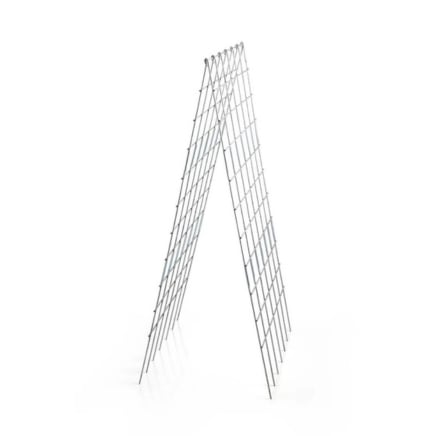
Folding A-Frame Trellis Support For Plants
Tie Stems to Bamboo Stakes
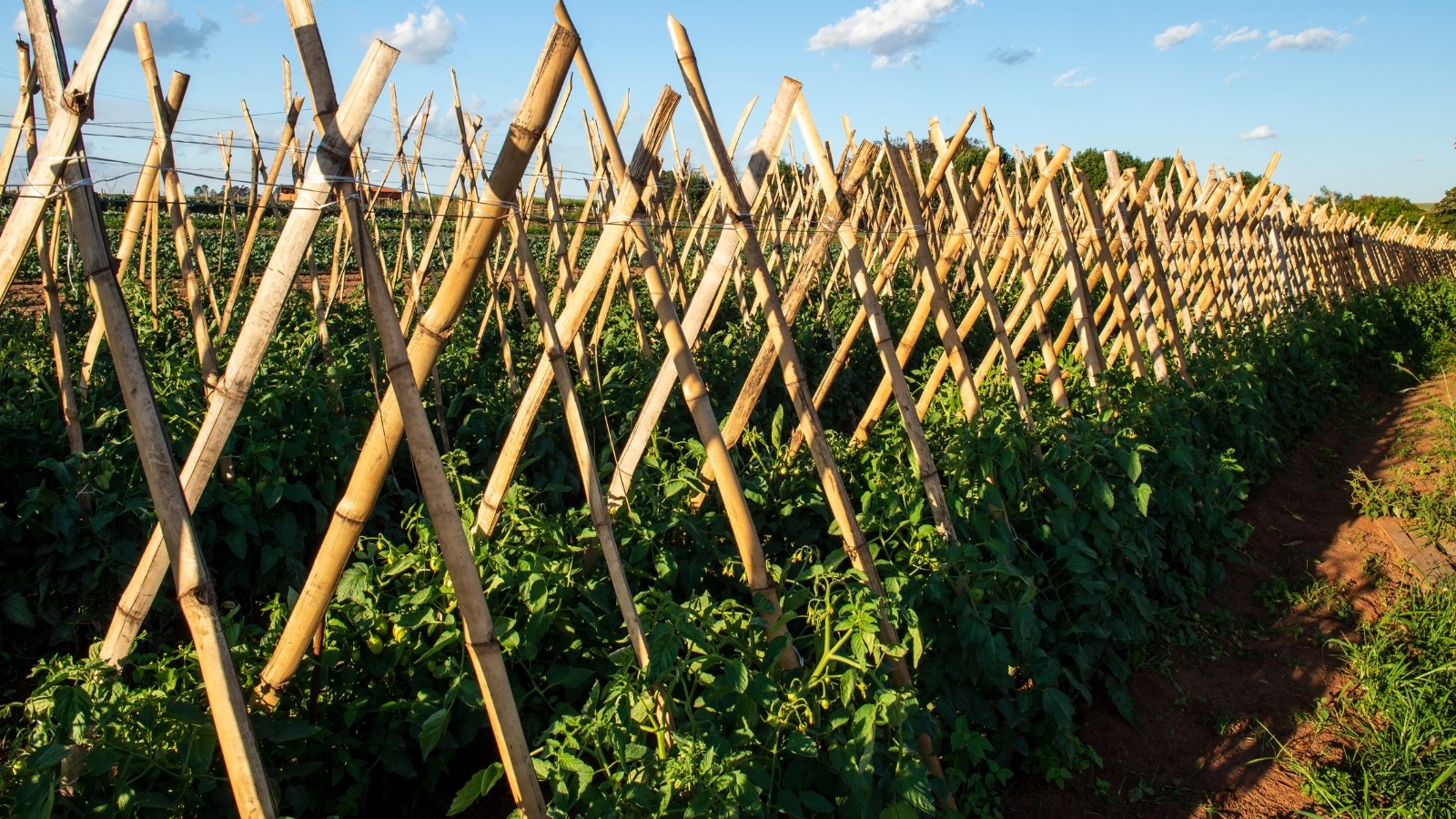 Fruiting tomatoes stay upright with gentle ties and firm guides.
Fruiting tomatoes stay upright with gentle ties and firm guides.This is the DIY plant staking method I use most often. It works well for fruiting crops, like tomatoes and eggplants, and on flowering perennials like bee balm and dahlias. Simply gather bamboo stakes, stick them in the ground near your plants, and tie the plants to the stakes.
To tie the plants, use a soft-bodied twine that won’t damage tender plant stems. Green plant tape works well, as does cushioned wire.
Plastic ties won’t decay or break down, and you’ll need to remove them from the garden at the end of the season. Use organic materials if you don’t want to clean them up. Try twine, string, or strips made from materials that break down, like hemp or cotton.
Stick Rebar in the Ground
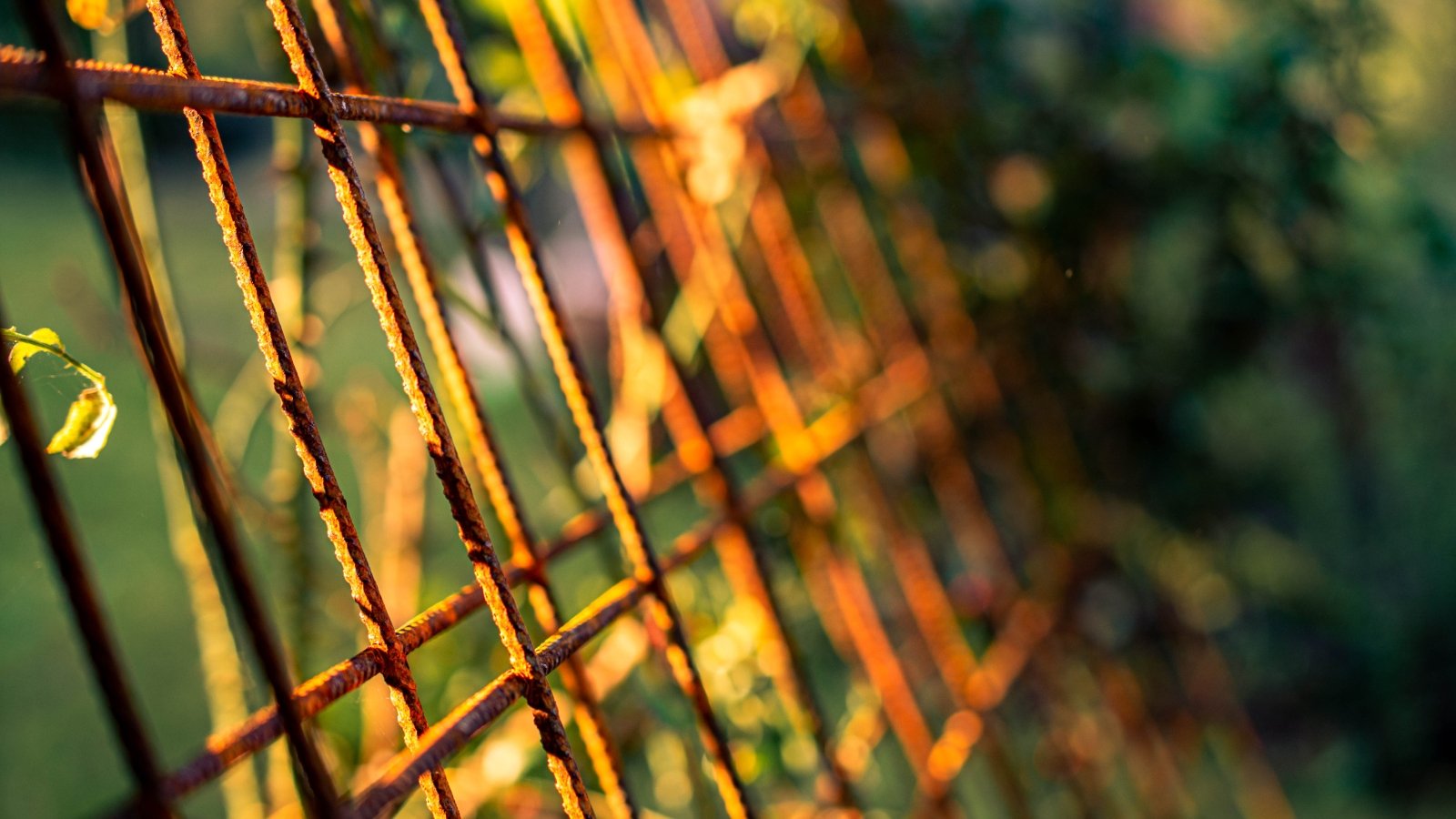 Old rebar finds new life propping up flower stems.
Old rebar finds new life propping up flower stems.Rebar is a common material on construction sites. It’s a metal pipe that forms the backbone of concrete structures. It’s not only useful in construction, but it’s also a beneficial DIY plant staking solution for floppy plants in the yard! Rebar’s thin shape and dark color help it blend in behind dahlia stems and bean vines.
Maybe you have some rebar left behind from a home improvement project, or you want to use it because it’s cheap and easily obtainable. No matter the reason, you’ll support your tall plants the same way as with bamboo stakes.
Start by sticking the rebar poles into the ground behind your floppy plants’ stems. Avoid harming sensitive roots by stabbing the pole an inch or two away from the base of the stem. Then, use your soft supports to tie the plant stems to the rebar.
Lean Plants on Other Plants
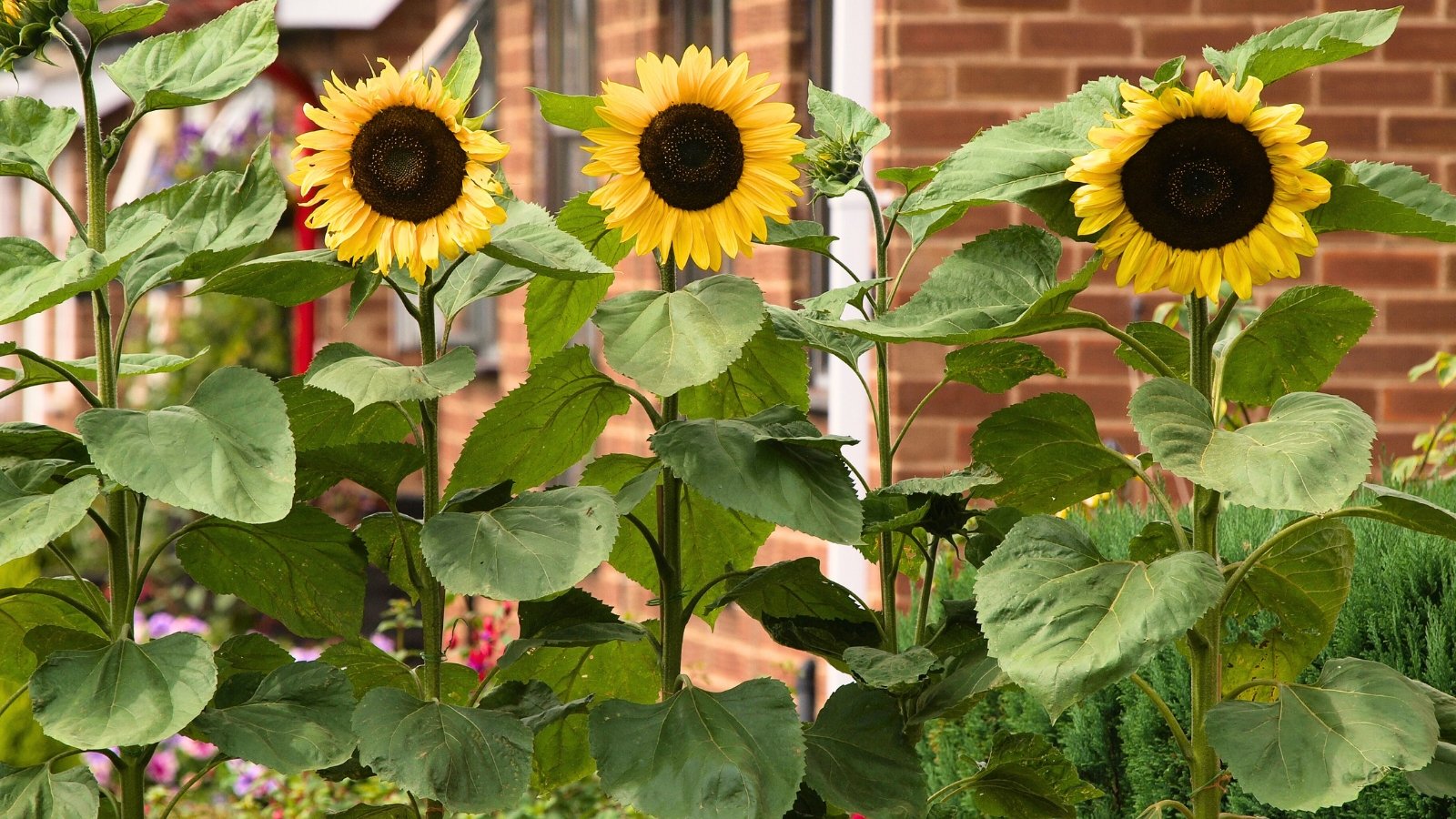 Taller plants offer natural support for their shorter neighbors.
Taller plants offer natural support for their shorter neighbors.This fun DIY plant staking technique requires you to plant more plants! When you put tall perennials and shrubs behind shorter ones that need staking, you create an ideal situation for a symbiotic relationship. The two different plants help each other grow in unique ways.
The tall plants provide an upright structure for the shorter ones to grow on. As the two species intermingle, their blooms invite beneficial insects that increase pollination rates of your surrounding crops. It’s a win-win situation!
Use plants like sunflowers or corn as the tall species. Or, choose a woody shrub like goji berries or blueberries. Erect, perky specimens that don’t need staking are the best to use. Lean the floppy plants on the taller ones by weaving their stems in between each other.
Make a Square
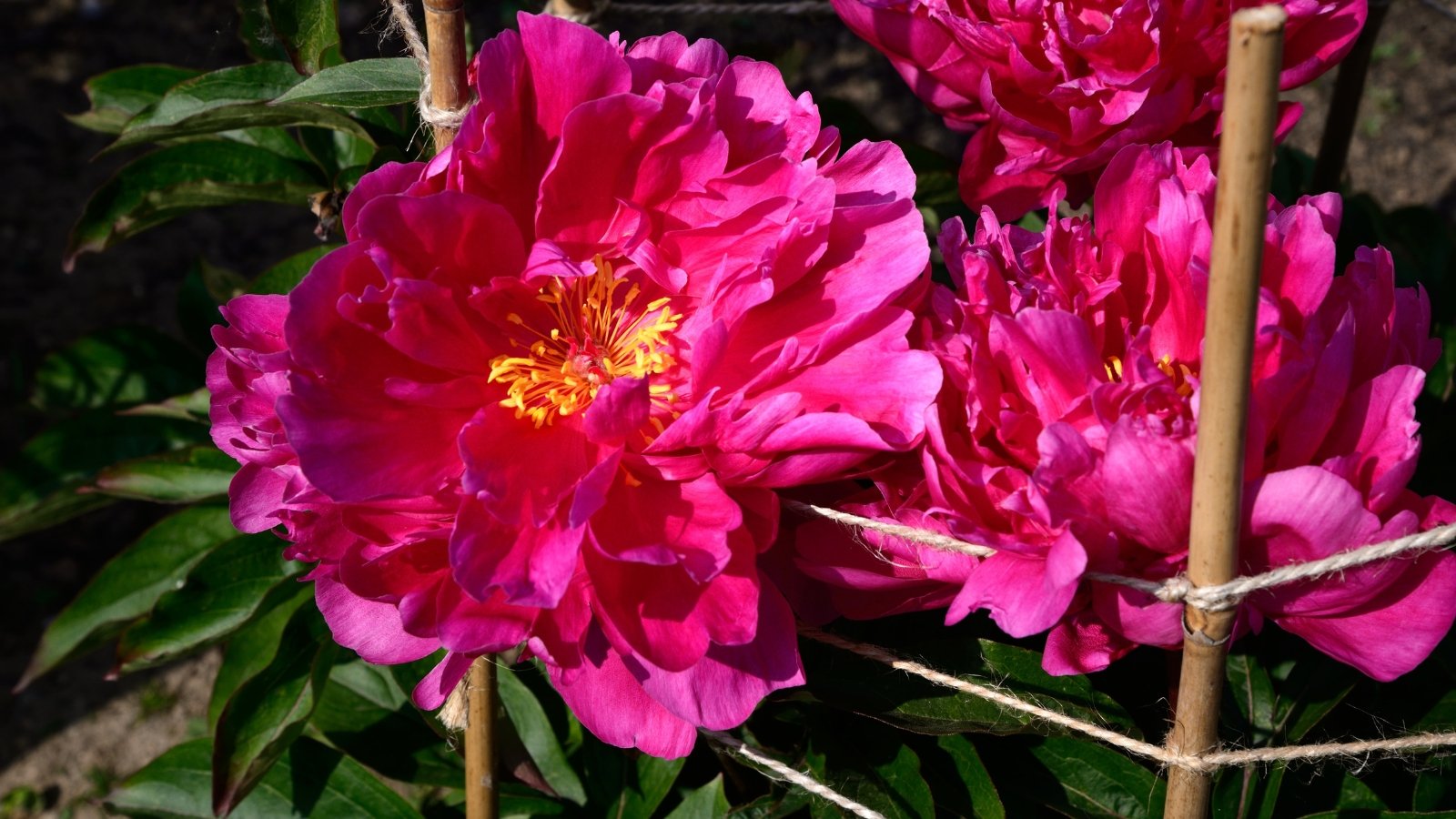 Wrapping string between stakes tames floppy, bushy plant habits.
Wrapping string between stakes tames floppy, bushy plant habits.Some plants, like peonies and artemisia, tend to flop outward because of their bushy growing habits. They benefit from a different DIY plant staking solution. Instead of tying plants to other ones, you’ll provide a cage-like support system that confines them to a central location.
All you need are some bamboo stakes and twine or string. Stab four or more stakes in a square shape around your plant’s stems. Then, tie the string around the posts. Weave it in between them, and repeat the process to create layers of string up and down the square.
When the perennials or annuals grow tall, they’ll stay within the square shape and remain erect. You won’t have to worry about them flopping around, no matter how tall they grow.
Set Up Some Mesh
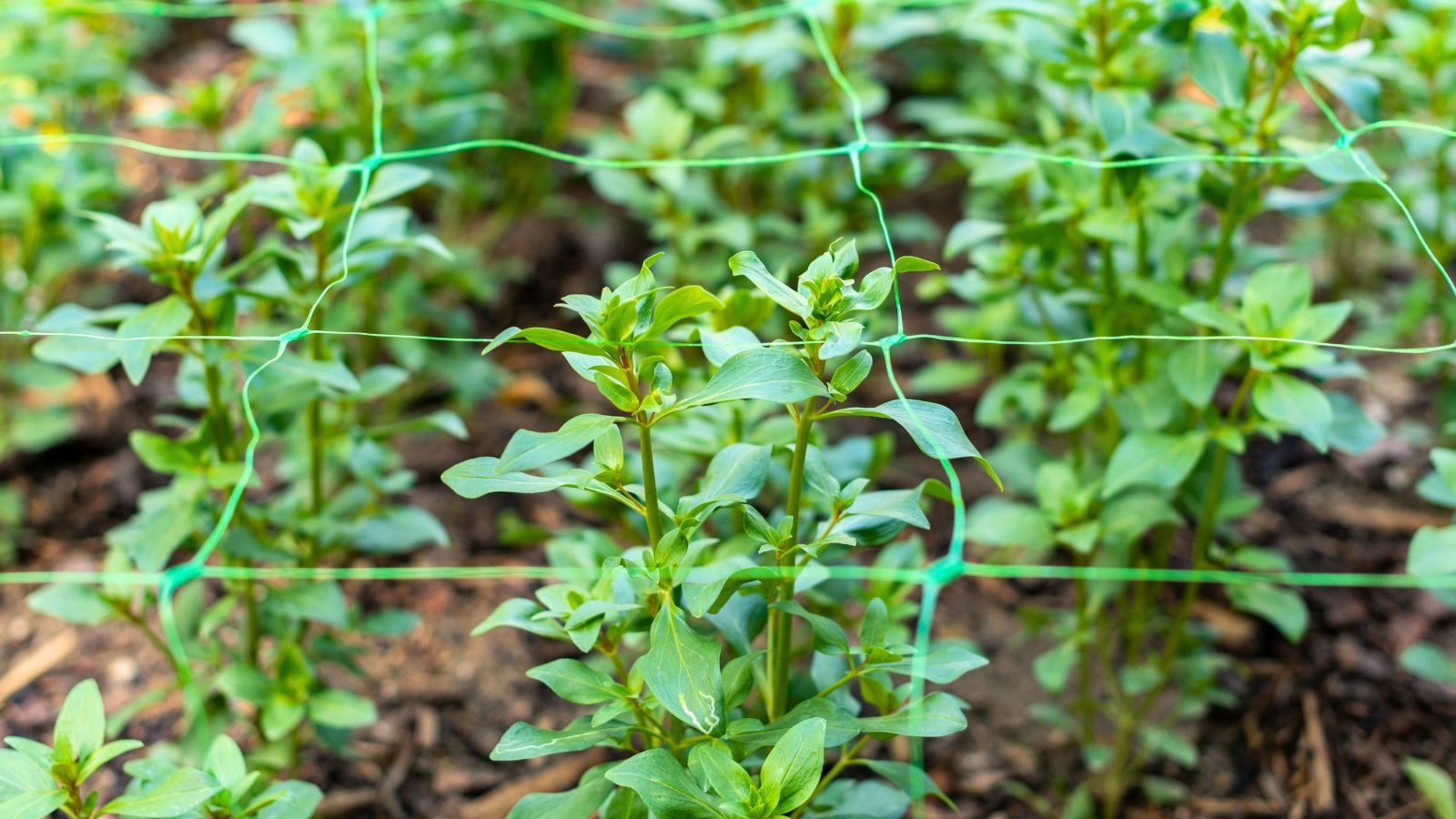 Blossoms and fruits soon cover the subtle mesh frame.
Blossoms and fruits soon cover the subtle mesh frame.Oftentimes, discrepancy is required in the garden. You don’t want ugly stakes sticking out. This DIY plant staking method utilizes chicken wire or a similar mesh material to create a sturdy cage that plant stems cover as they grow. It’s discreet enough to work for the backyard or the front.
Make a circle with the mesh, leaving enough space for the mature plant’s width. Its height should be a tad shorter than the mature height of the stems. That way, the flowers and fruits cover the top of the mesh. Jab two or three stakes into the wire and the soil to pin it down.
Though the wire will be visible at first, rapid growth in spring will quickly cover it with flowers, fruits, and lush foliage. Remove it at the end of the season by unpinning the stakes and unraveling the mesh. You may also leave it in a circle if you plan on using it next year.
Create a Grid
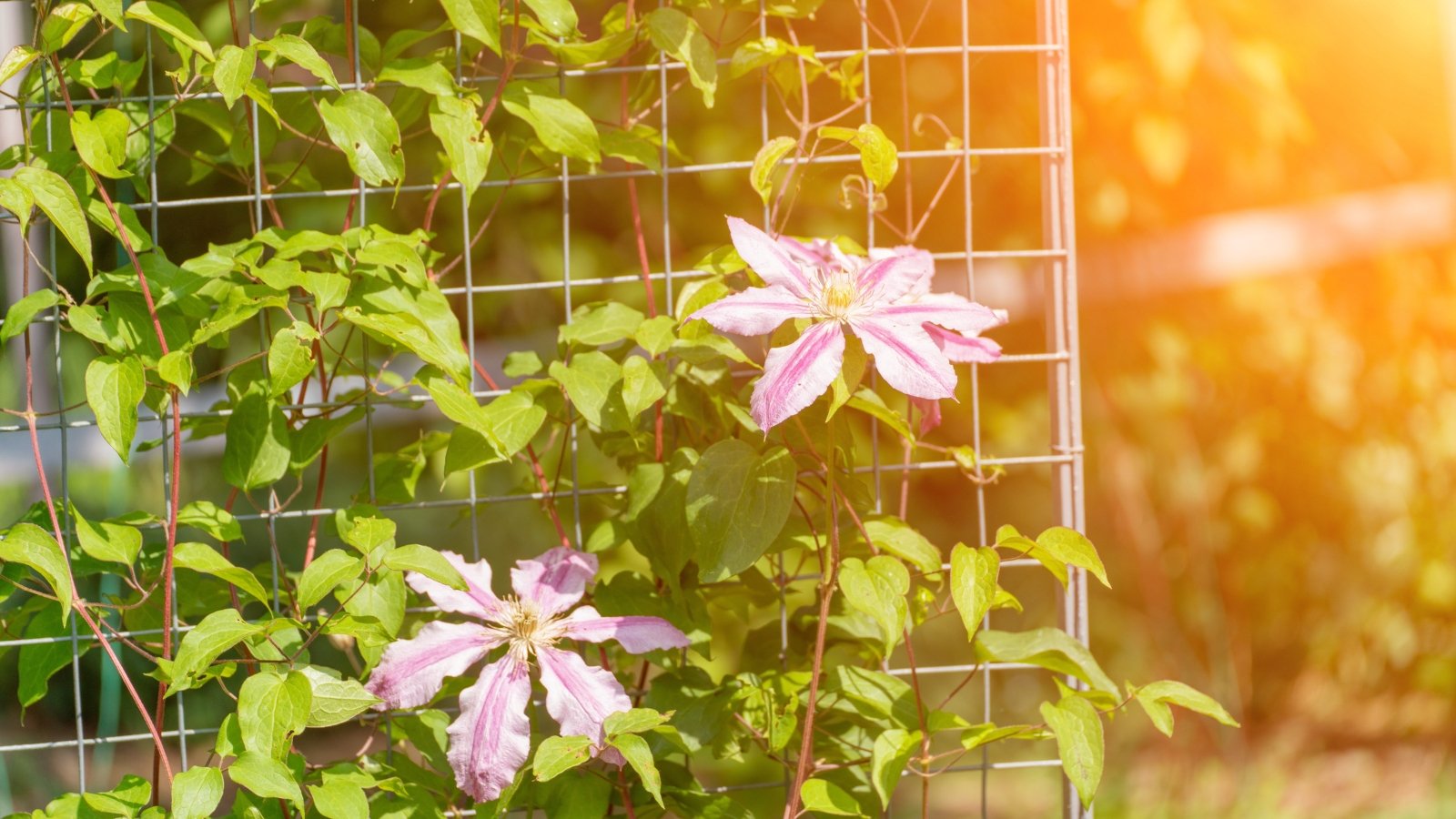 Flowers rise straight through the grid, supported all season.
Flowers rise straight through the grid, supported all season.Wildflower farmers use ingenious solutions for DIY plant staking. They often have long beds full of flowers that all require staking. They grow them close to each other so the stems grow tall and lanky. Instead of supporting each floppy stem, they’ll support the entire crop.
To do this, farmers use grids made of metal, wood, or string. The grids have square holes that stems grow through, and the tall plants stay erect in their square without flopping over. Though pre-made solutions are available at garden centers and home improvement stores, it’s easy to make one yourself.
Start by gathering twigs, branches, and tough stems. Weave them in a square-like pattern to make a grid, then plant seeds in the openings. Another option is to create a grid with a string. Stake poles into each corner of the garden bed, then tie the string around the perimeter.
Keep the string around, as you’ll need lots of it! Tie additional lines from one edge of the perimeter to the opposite end. Then, do the same on each side until you create a patchwork of string. The perennials will sprout up between the holes and stay upright instead of floppy.
Use What You Have
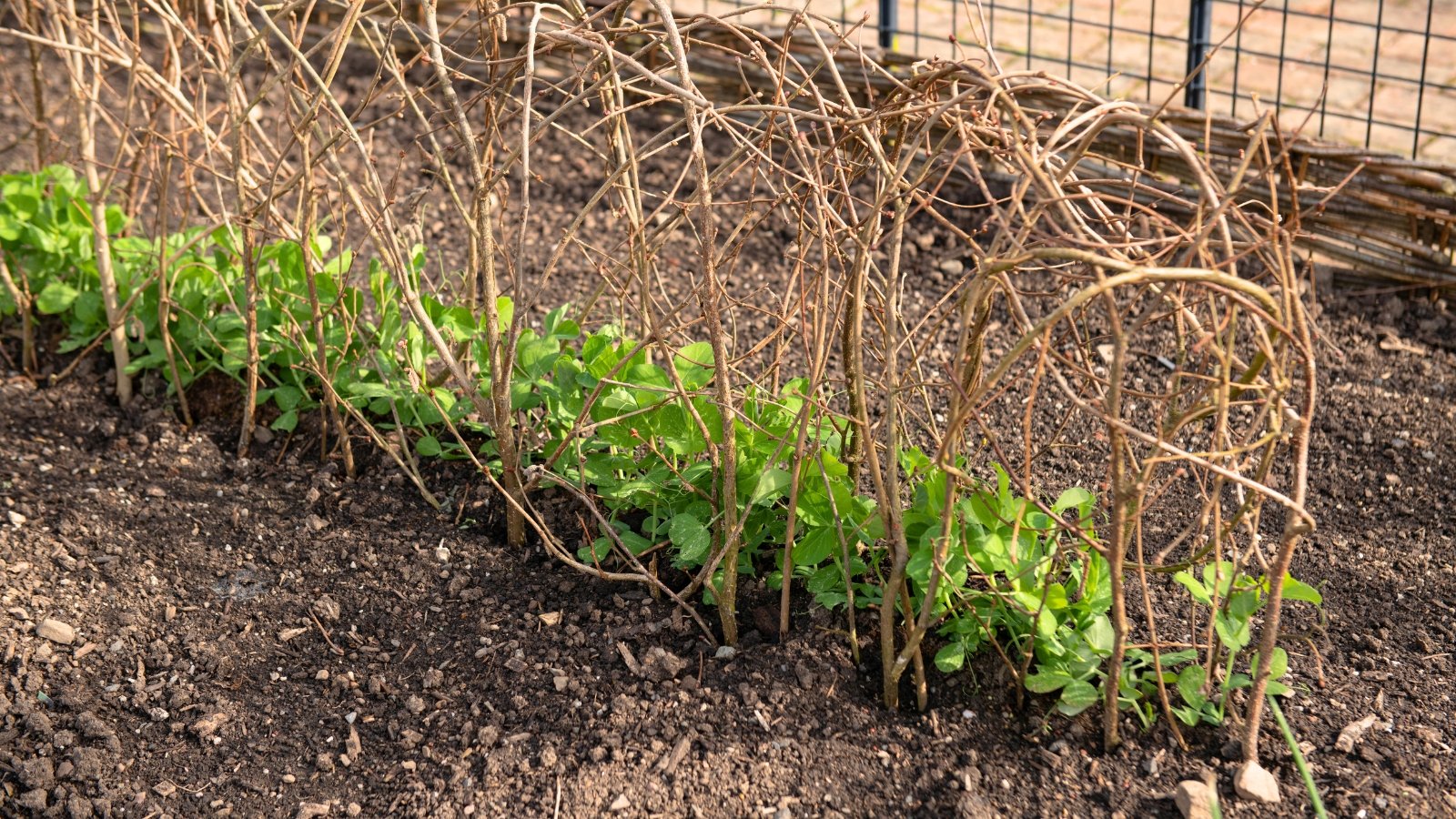 Old sticks make perfect supports for growing plants.
Old sticks make perfect supports for growing plants.This DIY plant staking solution will help your budget and your yard! Using what you have is a great method for reducing waste both inside and outside the garden. For many pre-made products, there are DIY solutions that do the same job!
Don’t have bamboo stakes? Repurpose sticks instead. Save your sunflower stalks, let them harden over the winter, and use them as stakes the next spring. Do the same with any tall species that’ll form hard stems over time.
The simplest way to support a limp specimen is with a nearby twig. Jab it in the soil so that the tall stem leans on it. If the stem leans to the ground again, jab another twig to create an X-shape. Nestle the stem in the X, and it’ll stay perky the rest of the growing season.


 4 days ago
16
4 days ago
16



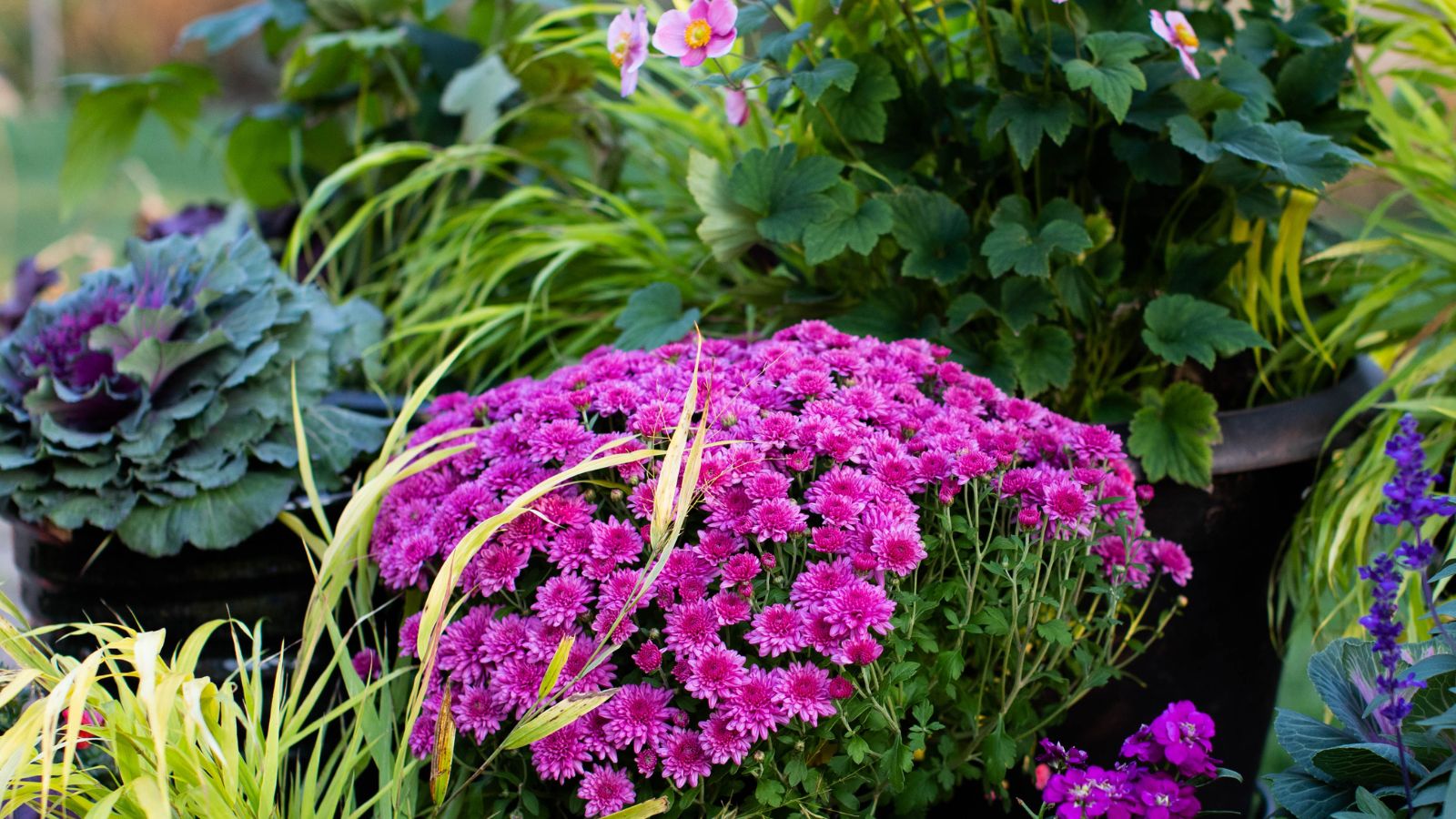
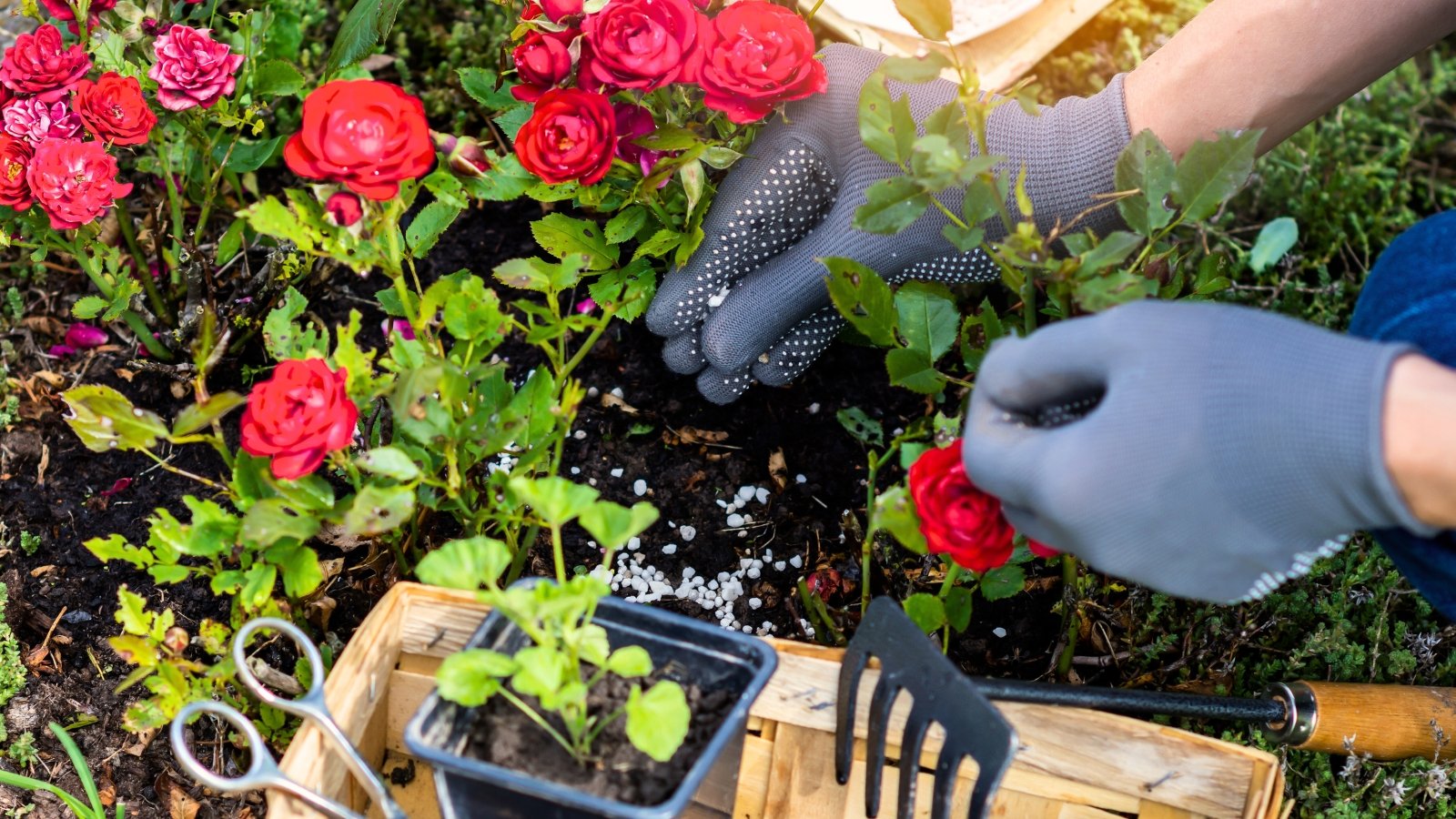
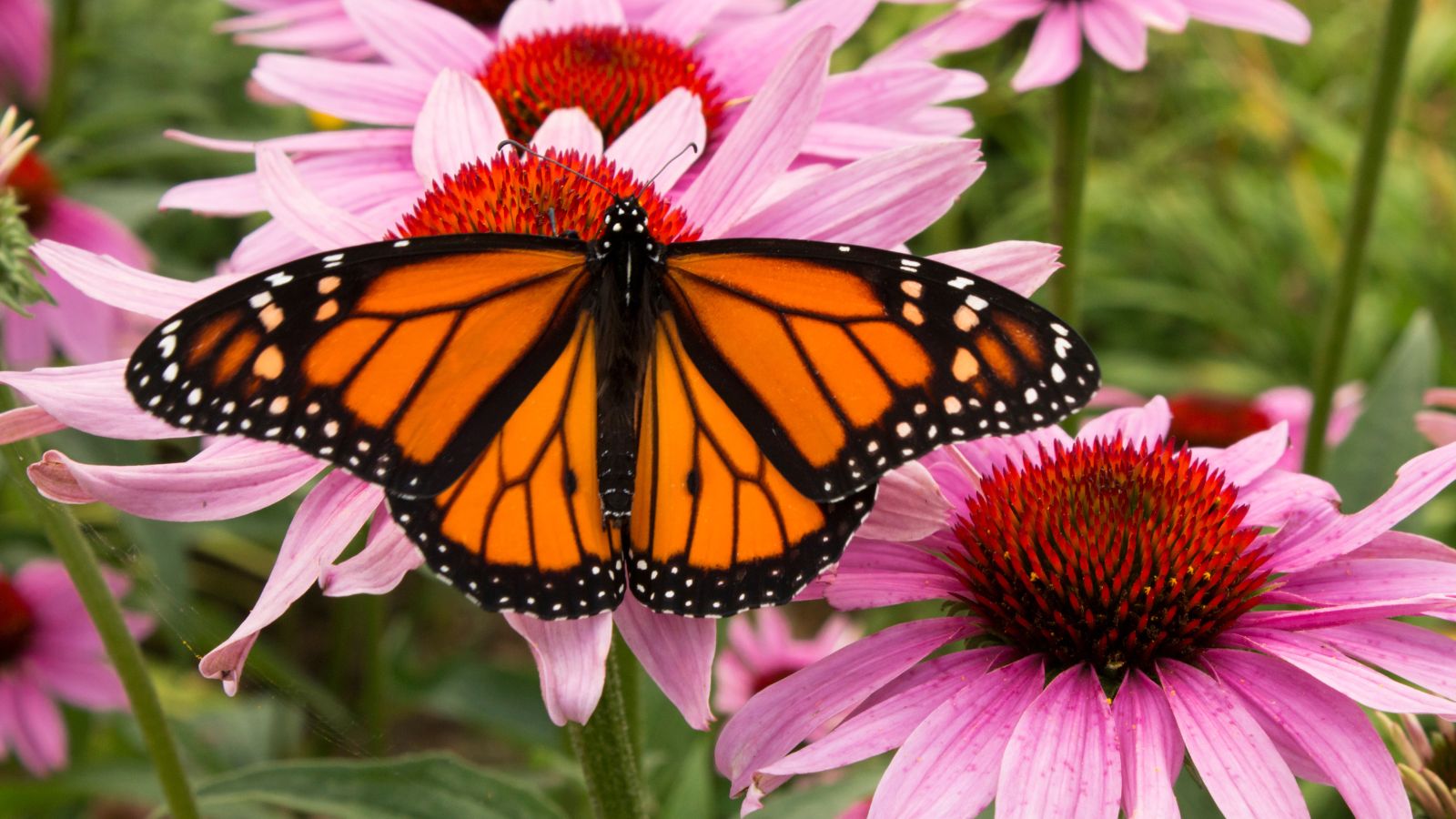
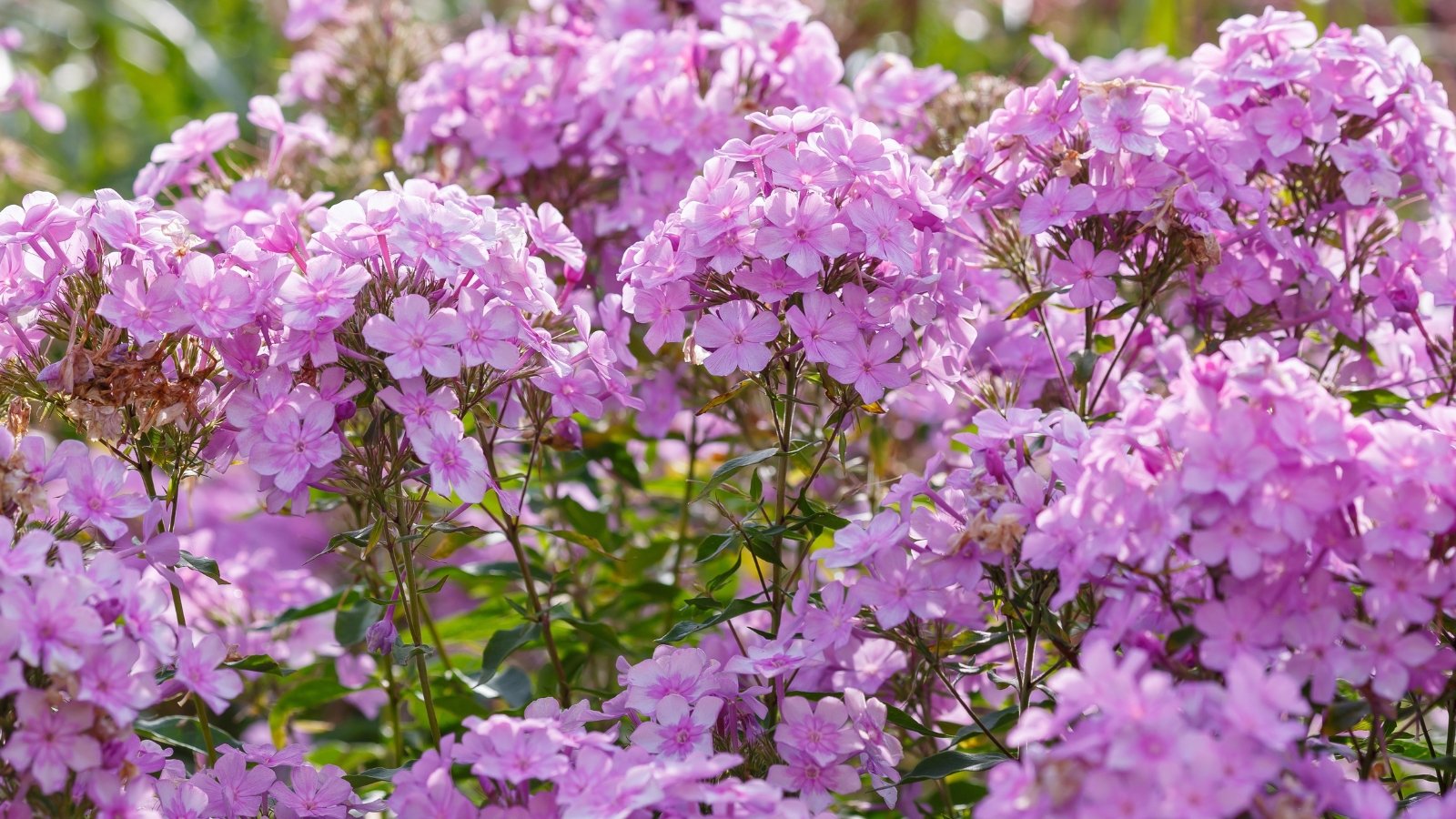














 English (US) ·
English (US) ·  French (CA) ·
French (CA) ·